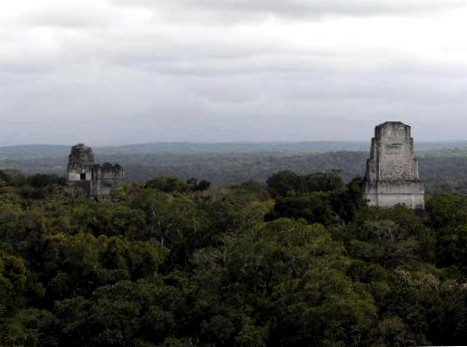
She presents her analysis of limestone deposits in a dripstone cave of central america in the u.S. Journal "science".
The team led by douglas kennett of pennsylvania state university studied the stalagmites, or stalactite columns growing from the ground, of the yok balum cave in belize, where the mayan culture flourished more than a millennium ago. The core of the investigation was isotopes, i.E. Varieties of an atom with different weights. The content of the various oxygen isotopes in the slow but steady deposits allows a detailed inference of the amount of rain that fell there. At the same time, the age of the sedimentary layers was determined with further isotopes. The researchers compared this time map of the rain with the state of their culture as known from various mayan writings.
For example, they created a war index from the relative occurrence of characters that indicated disputes and conflicts over time. Particularly helpful was the fact that the maya left detailed calendar data on the succession of their rulers.
From this comparison, the researchers were able to identify a clear pattern for the years 300 to 1100: thereafter, between 400 and 660, the maya culture experienced a period of expansion, increased urban construction and general prosperity. Exactly this period was also characterized by abundant rainfalls. This was followed, however, by a period of recurrent drought years during which agricultural production declined. The result was a collapse of central power, division into different communities, and a general political and social decline.
The final end for the once highly developed maya culture finally coincided with two particularly strong periods of drought around the years 1020 and 1100. According to researchers, it hit hard the society, which had already been severely attacked and divided into small states, and brought the mayan culture to a definitive end.
"The effects of climate change are complex and occur on different time scales". Abrupt climate changes are certainly only part of the story," emphasized lead author kennett in a statement from his university. "The preceding conditions, which demanded the complexity of the society, built, so to speak, the stage for the later problems and the decline of the political institutions."
According to the researchers, the new analyses from the stalagmite deposits provide the most accurate data to date on precipitation during the maya period. A series of durreperioden is however already long as cause for the decline of the maya high culture suspected. For example, gerald haug of the geo research center in potsdam had already deduced the chronological sequence of precipitation in central america from marine sediments off venezuela in 2000 and also found evidence of pronounced periods of drought.